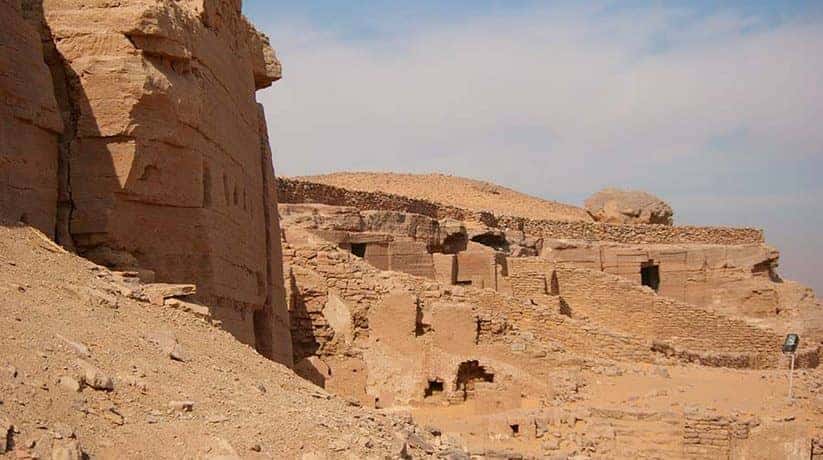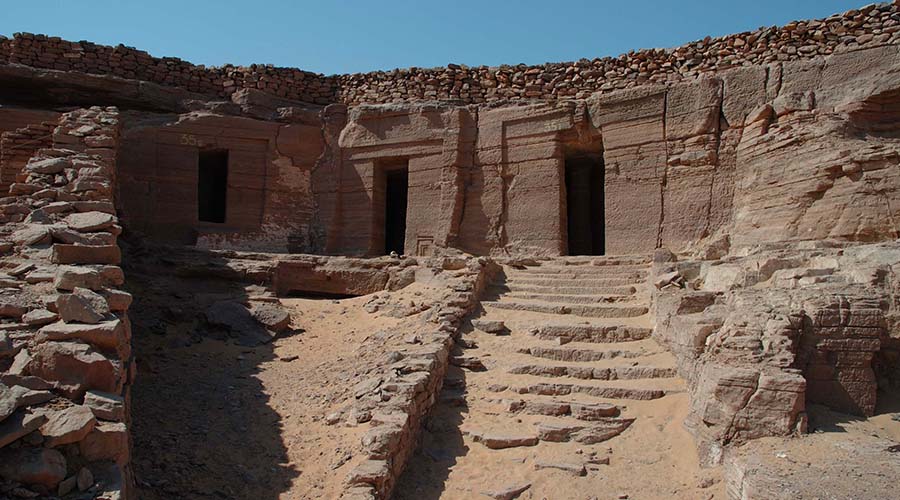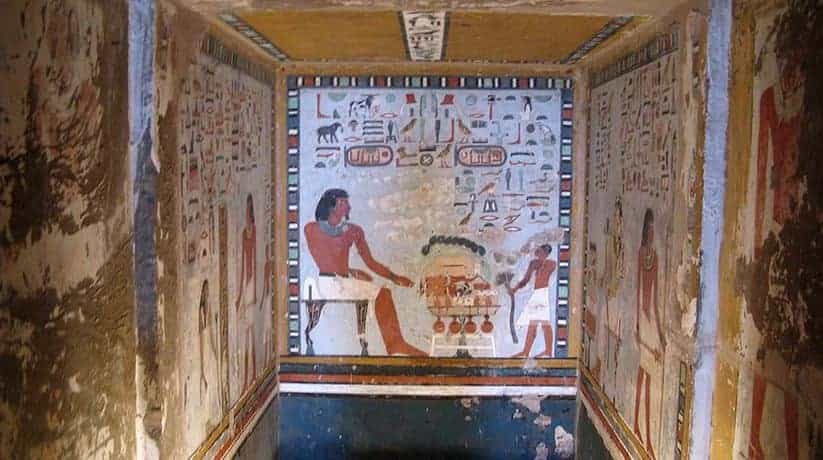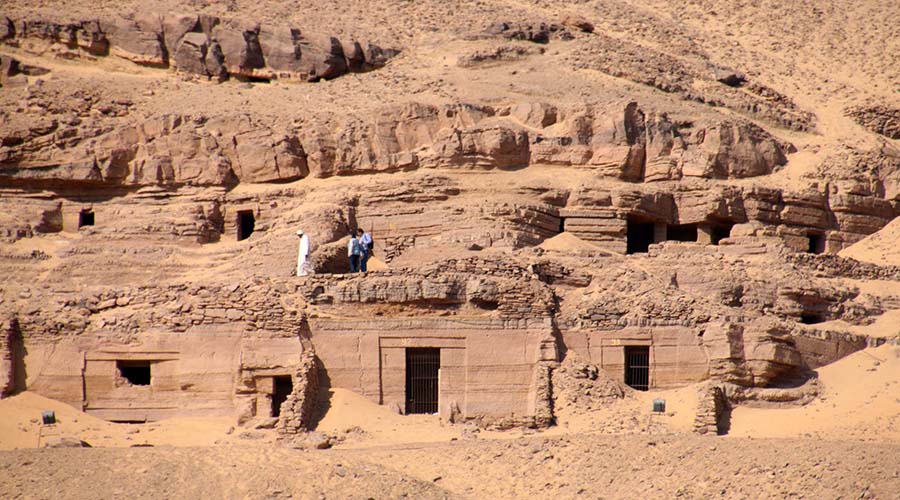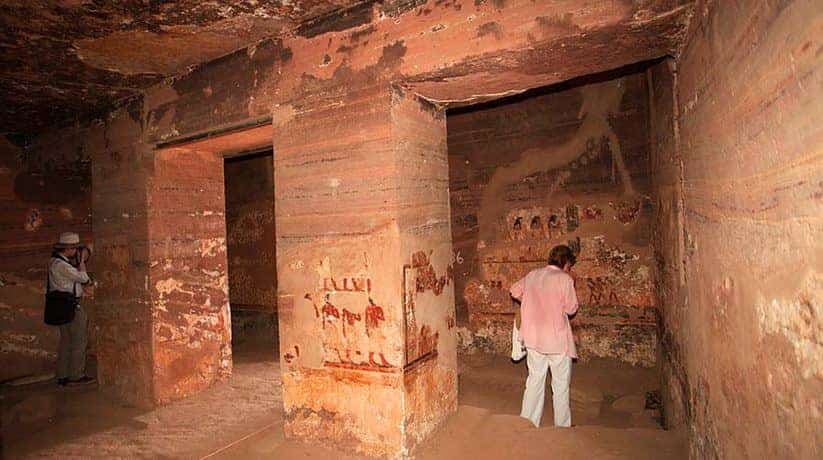Nobles tombs Aswan Egypt tours, prices, booking, reviews
Nobles tombs Aswan Egypt located near the West Bank of Aswan. In fact, they are in front of the Northern section of the Elephantine Island. The rombs indeed have a significant importance. The tombs chance to know about the history of Egypt during the Old and the Middle Kingdoms. Lord Greenville was a British archaeologist. In fact, he was the one who discovered the tombs. It was in the period between 1885 AC and 1886 AC. In fact, the Nobles tombs Aswan located in area which called the tombs of Kubbet El Hawa. This area has some wonderful ancient art. It also has a noteworthy chronological importance of the Middle and the Old Kingdoms.
The wall paintings inside are alive. They display the daily life activities of the ancient Egyptians. In fact, it indeed is in a magnificent masterpiece of art. The most important and beautiful tombs in the Nobles tombs are the tombs of Harkhuf and Sarenput II. The tombs of Sabni and Mekho are also importnat and beautiful as well. In fact, there is a small old passageway leads to a staircase. The staircase takes the guests to the upper open courtyard where the tombs dug. There are a large number of tombs which date back to the Middle and Old Kingdoms periods. However, some of them only are worth a visit.
The tombs of Sabni and Mekhu at Nobles tombs Aswan Egypt:
The owners of these tombs were father and son. In fact, both overseers of Upper Egypt in Dynasty VI during the reign of Pepy II. Reliefs on the walls of Mekhu’s tomb record his murder while he was on an expedition in Nubia. In fact, the revenge taken by Sabni, his son. He buried with much ceremony. The tombs roughly constructed in Old Kingdom style. They have small obelisks at the entrance doorway and an offering table of Mekhu still in situ.
The tomb of Sarenput II at Nobles tombs Aswan Egypt:
The next major tomb in the sequence is that of Sarenput II. In fact, he was the overseer of the Priests of Khnum. He also was Commander of the Garrison at Elephantine. In fact, the tomb date back to the reign of Dynasty XII king, Amenemhet II. Moreover, it indeed is one of the best preserved tombs in the tombs of the Nobles Aswan. It consists of a large chamber with six symmetrical undecorated pillars. Furthermore, it has a gallery which flanked by six niches. Each once contains mummiform statues of the deceased prince. The four pillars of a second chamber decorated with images of Sarenput.
Beyond this, a chapel cut deep into the rock. It also plastered and painted in vivid colors. In fact, it depicts his wife, a Priestess of Hathor and other family members. In the niche at the back of the chapel Sarenput named as ‘Hereditary Lord’. This biographical text is colorful with well-depicted hieroglyphs. Moreover, it shows the cartouche of ‘Nebkaure’ – Amenemhet II as well as an unusual glyph of an elephant. The style of painting and the hieroglyphs are like to the Old Kingdom tombs. In fact, they led some Egyptology men to suggest that the same artists decorated them.
The tomb of Khunes at Nobles tombs Aswan:
This is a Dynasty VI tomb, its owner Khunes was a Lector Priest and Chancellor. A side chamber to the left of the entrance re-used as a Coptic cell. Another chamber on an upper level was a serdab. The tomb contains scenes of the deceased and his Family in daily life.
The tomb of Harkhuf at Nobles tombs Aswan Egypt:
Harkhuf was an overseer of Foreign Troops during the reigns of Pepy I, Merenre and Pepy II in Dynasty VI. This tomb is famous for Harkhuf’s biographical text. It also has a copy of a letter from Pepy II. He requests that Harkhuf to bring the young king a dancing pigmy from an expedition into Africa.
The tomb of Pepynakht at Nobles tombs Aswan Egypt:
The owner of this tomb was another Overseer of Foreign Troops during the reign of Pepy II of Dynasty VI. The tomb has a columned facade, biographical texts and good reliefs. The reliefs show hunting and bull-fighting scenes. Heqa-ib was the deified official whose cult chapel stood on Elephantine Island.
The tomb of Sarenput I at Nobles tombs Aswan Egypt:
The last major tomb on the upper level dates back to Dynasty XII. It also dates back to the reign of Senusret I. In fact, Senusret I was a Governor of Elephantine. He also was Overseer of the Priests of Satis. There is a columned court has scenes on the rear walls. The scenes include the deceased hunting and fishing with his dogs and his sandal-bearer. In a hall with four columns there are scenes of daily life. Moreover, there are a boating scene and a biographical text with painted hieroglyphs. A chamber at the rear of the tomb has a “false door”.
Note the causeways which run down the hillside from the different cemetery levels. These were the original ‘paths’ to the tombs and coffins. The burial goods dragged up these steep inclines from the river. At night the whole cemetery area floodlit and can seen from all over Aswan.
How to get to the Nobles tombs Aswan:
To get to the tombs, there is a ferry boat. It leaves from the northern end of the Corniche. You also can hire a Felucca which will wait and bring you back. You could also combine a visit to the Nobles tombs Aswan with a longer Felucca trip. The tombs are quite deep in the hillside. As a result, they are very dark. Photography not allowed.

